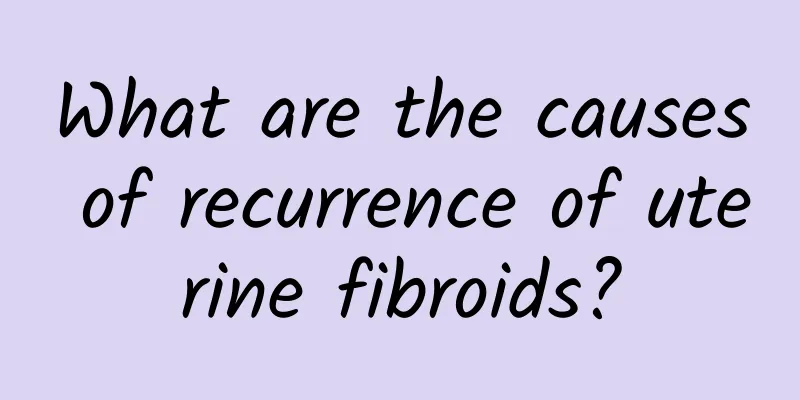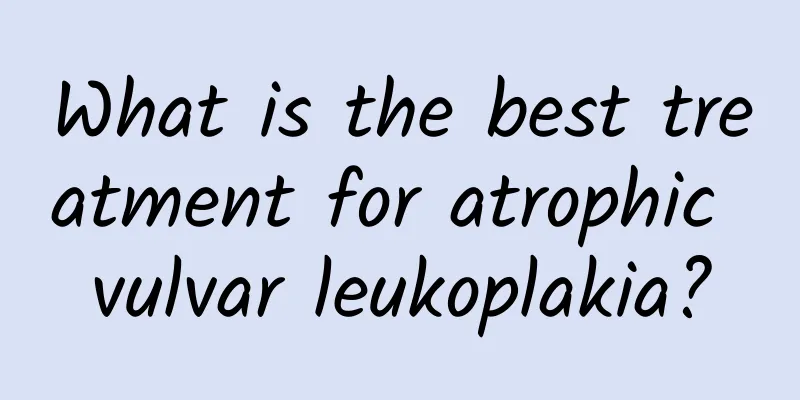How to lose weight quickly, effectively and healthily? Comparison of balanced diet, low-sugar diet and ketogenic diet

|
Most people have experience in weight loss, but how to eat the healthiest way? How to eat to lose weight fastest? People who want to lose weight often want to lose weight quickly and effectively. Nutrition experts often remind people to eat a balanced diet, but many people also argue that low-sugar and ketogenic diets can also help with weight loss. What are the differences between these diets? Let nutritionist You Naijia explain. As the name suggests, a balanced diet refers to a balanced intake of various nutrients, including: carbohydrates (sugars), protein, fat, fiber, vitamins, minerals, etc. Therefore, everything from whole grains, beans, fish, meat, eggs, fresh fruits and vegetables to appropriate amounts of oils and fats should be supplemented. Reduce carbohydrates and promote fat decomposition in the body What are low-sugar diet and ketogenic diet? Nutritionist You Naijia said that these two eating methods mainly control the intake of carbohydrates, which are the main source of energy for the human body. After carbohydrates are eaten, they are broken down into glucose, part of which is provided to the human body and part of which is stored in the liver to form glycogen. When the human body needs energy, it first uses glucose and then glycogen. If the glucose and glycogen in the body are exhausted, the body has to turn to breaking down fat as an energy source. Therefore, if carbohydrate intake is reduced, the available glucose and glycogen in the body are used up, and fat is broken down and burned as an energy source, thereby achieving the effect of fat loss. In terms of nutrient ratios, if a "balanced diet" is adopted, carbohydrates account for about 55% of the three major nutrients consumed daily, which is the highest proportion; if a "low-sugar diet" is adopted, the daily carbohydrate intake is 50-100 grams (about 20%); if a "ketogenic diet" is adopted, the carbohydrate intake must be more strictly limited, and you can only eat less than 50 grams per day (about 10%). Low-sugar diets and ketogenic diets have lower carbohydrate intake, and the intake of protein and fat is bound to increase. Low-sugar diet, ketogenic diet, increased protein and fat ratio Since low-sugar and ketogenic diets have a lower intake of carbohydrates, the intake of protein and fat is bound to increase. In terms of protein, a balanced diet contains about 15-20% protein and about 30% fat. A low-sugar diet increases protein intake and, relatively speaking, the proportion of fat also increases; a ketogenic diet significantly increases the proportion of fat by more than 70%, which is very different from the proportion of a balanced diet. Basic concepts of low-sugar diet Nutritionist You Naijia pointed out that a low-sugar diet is commonly known as the "Ah Jin diet" or the "meat-eating weight loss method", which mainly controls the daily carbohydrate intake to around 50 to 100 grams, and replaces part of the carbohydrates in a balanced diet with protein foods (meat, fish, eggs, soy products, etc.) and fats (vegetable fats, nuts, etc.) as a source of energy. In order to achieve the goal of reducing fat and increasing muscle, some people use a low-sugar diet to help lose weight or shape their body. Basic concepts of ketogenic diet What is the ketogenic diet? The ketogenic diet has higher restrictions on carbohydrates, and the daily intake should be controlled below 50 grams, and the fat intake should be greatly increased. Nutritionist You Naijia said that the principle of the ketogenic diet is to consume very little carbohydrates, forcing the body to use up all the glucose and glycogen, break down fat and produce "ketone bodies" for the body to use as energy, thereby achieving the effect of fat loss. The fats for the ketogenic diet include butter, coconut oil, fish oil, medium-chain fatty acids or vegetable oils. Avocados can also be chosen as a source of fat. Balanced diet Key: Balanced intake of various foods Suitable for: The general public (For patients with diabetes, kidney disease, and hyperlipidemia, nutritionists will make adjustments based on the disease conditions) How to eat: Divide the plate into four equal parts, and eat staple foods, beans, fish, meat, eggs, vegetables, and fruits at each meal. Try to make whole grains and root vegetables as the staple food. Chicken, fish or soy products are healthier as protein sources. In addition, you need to eat vegetables and fruits of various colors and types to ingest more diverse nutrients. Distribution ratio principle: carbohydrates 55%, lipids 30%, and proteins 15%. 【Low-sugar diet】 Key: More meat, less starch Suitable for: Healthy people (but not recommended for long-term use) Not suitable for : People with diabetes, high blood pressure, high blood lipids, gout, kidney-related diseases, pregnant women, children and adolescents in their growing period, and those with abnormal blood test results How to eat: A low-sugar diet mainly reduces the amount of staple foods, increases the amount of protein to about twice that of a balanced diet, and consumes a large amount of various vegetables to supplement sufficient fiber. The recommended protein sources are low-fat white meat, soy products and other high-quality proteins. Distribution ratio principle: lipids 50-60%, proteins 20-30%, and carbohydrates 20%. Note: Nutritionist You Naijia reminds that although a low-sugar diet can reduce fat and weight, long-term intake can easily lead to abnormal blood lipids or nutrient imbalance, so long-term use is not recommended. Ketogenic Diet Key: More oil and no starch Suitable for: Healthy people (but not recommended for long-term use) Not suitable for: People with diabetes, high blood pressure, high blood lipids, gout, kidney-related diseases, pregnant women, children and adolescents in their growing period, and those with abnormal blood test results How to eat: The ketogenic diet is a strict low-sugar diet that requires almost no carbohydrates and significantly increases fat intake. In order to make up for the amount of fat, the protein sources of the ketogenic diet usually include chicken or pork with skin, fat, and bacon. The fats include butter, coconut oil, fish oil, medium-chain fatty acids or vegetable oils. Avocados can also be chosen as a fat source. Distribution ratio principle: lipid 75%, protein 20%, carbohydrate 5%. If you want to lose weight, it is recommended to control calories moderately under the premise of a balanced diet, and combine it with regular exercise and good living habits, which is more beneficial to your health. Note: Nutritionist You Naijia pointed out that the human body is prone to increased water loss during the process of producing ketone bodies, which can cause dry mouth, frequent urination, and a fruity breath. Therefore, when adopting a ketogenic diet, you need to supplement enough water to avoid dehydration. In addition, the ketogenic diet contains a high amount of fat, and the increase in fat will slow down gastrointestinal emptying. For people with poor gastrointestinal function, indigestion, diarrhea, and constipation are likely to occur. Nutritionist You Naijia reminds that although the ketogenic diet has the effect of reducing fat, it is easy to cause vitamin deficiencies (such as B complex, C, and antioxidant phytochemicals) under the condition of long-term unbalanced diet and intake of single nutrients. Moreover, studies have shown that the ketogenic diet can easily increase the risk of cardiovascular disease and the risk of ketoacidosis (especially in diabetic patients). Therefore, it is not recommended to adopt a ketogenic diet for a long time. If you want to lose weight, it is recommended to control calories moderately under the premise of a balanced diet, and combine it with regular exercise and a normal schedule. This is a healthy and lasting way. If you really want to try the ketogenic diet, it is recommended that you consult a doctor or nutritionist first, and closely monitor your physical condition during the process to avoid danger. |
Recommend
Two main treatments for cervical erosion
There are two commonly used methods for the treat...
How do I know if I have pelvic inflammatory disease?
Pelvic inflammatory disease is one of the common ...
Reduce and reselect! Endoscopic sleeve gastroplasty can reduce 15-20% of total body weight
Obesity has become an important factor affecting ...
What to eat when bleeding from uterine fibroids? What to eat when bleeding from uterine fibroids?
What to eat when bleeding from uterine fibroids? ...
Four common treatment methods for irregular menstruation
Irregular menstruation can be caused by many reas...
Pelvic inflammatory disease usually causes low back pain in the late stage
Pelvic inflammatory disease usually causes back p...
How long does it take to recover after uterine fibroid surgery? How to adjust after uterine fibroid surgery
The best way to treat uterine fibroids is surgery...
Bartholinitis diet therapy
Bartholinitis and Bartholin cysts Bartholin gland...
How long after taking abortion pills can you eat? What nutrients do you need to supplement after abortion?
Medical abortion is achieved by taking drugs to c...
Exercise and weight loss plateau? Drinking coffee at this time will double the effect!
I believe that everyone who wants to lose weight ...
What are the nursing methods for chronic pelvic peritonitis
As for pelvic peritonitis, we all know that the o...
What medicine should women use for cervical erosion? Common questions for patients with cervical erosion
We know that cervical erosion is a common gynecol...
What are the symptoms of cervical warts
Nowadays, cervical warts are highly contagious, b...
Chocolate Cyst Surgery
Chocolate cyst surgery is a common treatment for ...
What to do if you bleed again after menopause
Postmenopausal bleeding refers to abnormal vagina...









